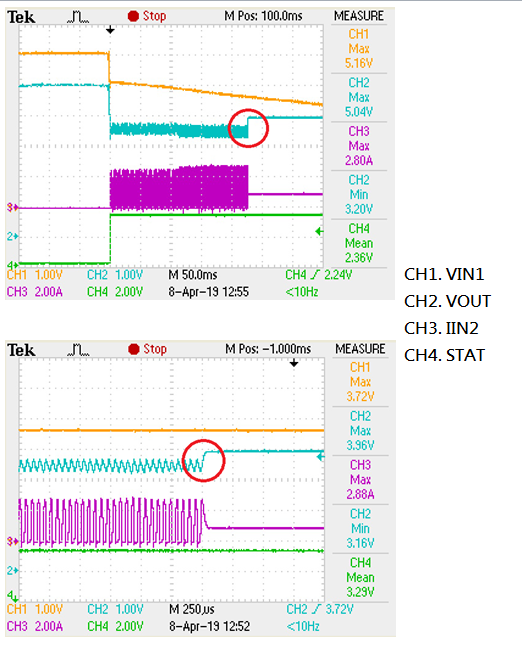Other Parts Discussed in Thread: TPS2112A
Hi E2E,
Power Mux circuir as below
(1). VCC_5V_IN : Main power (Adaptor 5V)
(2). Vbat_IN : Battery (3.6~4.2V)
Avg. System power consumption : 5V / 820mA
IN2 : use power supplier 4V/1.6A to simulate
Question:
Why OUT pin (Ch2) will unstable 225ms when STAT changed ?





